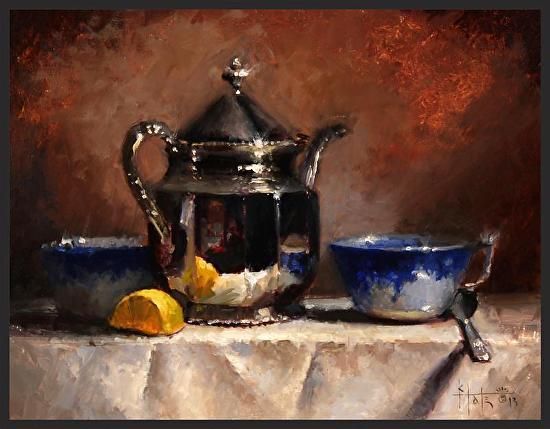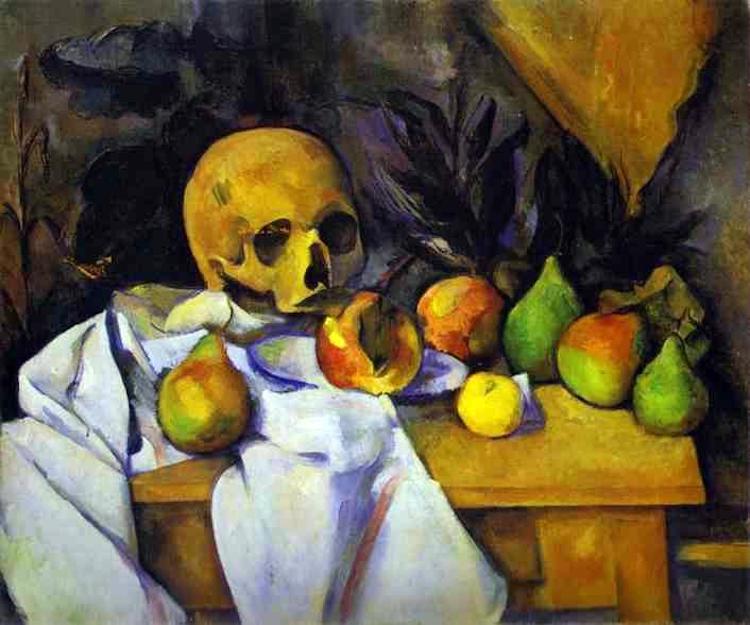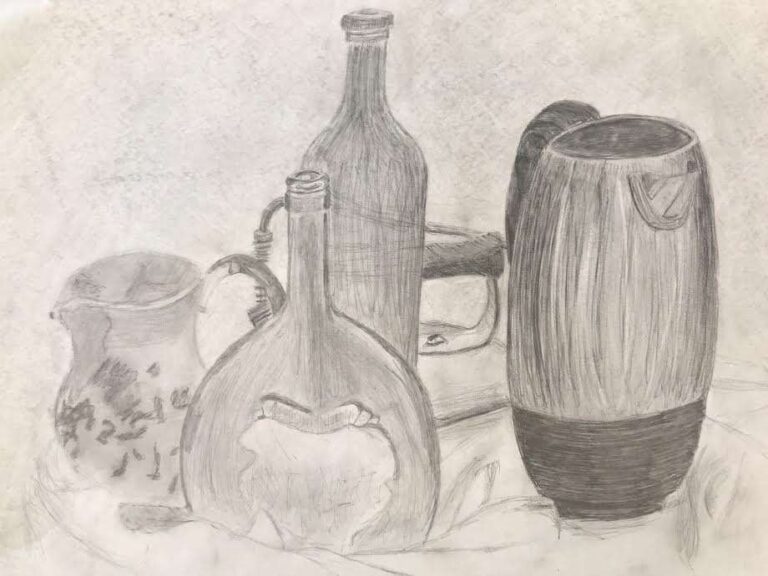Still life drawing is a timeless art form that has captured the imagination of artists for centuries. It involves capturing the essence and beauty of inanimate objects through observation and skillful rendering. This type of drawing requires a deep understanding of light, shadow, form, and texture to create a realistic representation of the subject.
If you are an aspiring artist looking to master the art of still life drawing, this comprehensive guide is for you. In this article, we will explore the materials and setup needed, as well as techniques and insights to help you unlock your full potential in this captivating art form.
Materials and Setup

Before embarking on your still life drawing journey, it is important to gather the necessary materials and set up your workspace. Here are some essential items you will need:
- Drawing paper: The first step is to choose the right type of paper. Opt for high-quality paper that can withstand erasing and layering, such as acid-free drawing paper or Bristol board. These types of paper offer a smooth surface and help preserve the integrity of your drawing.
- Pencils: A range of pencils is crucial for creating tonal variations and subtle textures in your drawing. Soft pencils (such as B or 2B) allow for dark, expressive marks, while harder pencils (such as H or 2H) provide lighter, more delicate lines. It is recommended to have a variety of pencils at your disposal, from 9b to 9h, to achieve a full range of values.
- Erasers: Both kneaded erasers and erasing shields are valuable tools for shaping forms and removing unwanted marks. Kneaded erasers are soft and pliable, making them ideal for lifting graphite off the paper. Erasing shields, on the other hand, are used to create precise edges and highlights by covering areas you don’t want to erase.
- Sharpeners: To create precise lines and clean edges, it is essential to keep your pencils sharp. Invest in a good quality sharpener or consider using a razor blade for a more controlled sharpening process.
- Still life arrangement: The most important element of still life drawing is the subject itself. Choose objects that you find visually appealing and challenging to draw. Think about their form, texture, and how they relate to one another in terms of composition.
Now that you have gathered your materials, it’s time to set up your workspace. Make sure you have ample lighting, preferably natural light, as it will provide the most accurate representation of color and value. Arrange your objects on a table or pedestal, ensuring there is enough space between them to avoid tangling lines and creating visual clutter.
Observing Your Subject
Observation is key to realistic still life drawing. It involves looking at the subject closely, analyzing its shape, form, texture, and relationship to other objects. Here are some tips to help you observe your subject effectively:
Focus on the Basic Shapes
Start by breaking down your subject into basic shapes such as circles, squares, triangles, and cylinders. This helps you understand the overall structure and proportion of the subject and makes it easier to draw.
Pay Attention to Proportions and Angles
Proper proportions and angles are crucial in achieving a realistic representation of your subject. Take the time to measure and compare the size of different elements of your subject using your pencil or any other measuring tool. You can also use your pencil as a guide to determine angles and negative spaces.
Analyze the Light and Shadow
Light and shadow play a vital role in creating depth and dimension in a still life drawing. Observe where the light source is coming from and how it falls on your subject. Look out for subtle changes in values and shades, as these will add realism to your drawing.
Study the Textures
Another important aspect of still life drawing is capturing the texture of different objects. Pay attention to the surface of your subject and observe how it reflects or absorbs light. Use your pencils to create different textures, such as rough, smooth, and shiny, to add interest to your drawing.
Techniques for Realistic Still Life Drawing

Now that you have observed your subject closely, it’s time to apply some techniques to create a realistic still life drawing. Here are some useful tips to help you achieve a lifelike representation of your subject:
Start with a Light Sketch
Start by making a light sketch of the basic shapes and outlines of your subject. This initial sketch will serve as a guide for your final drawing and can be easily erased or modified if needed. Remember to keep your lines light and loose, as you will add more details later on.
Build up Layers of Value
To create depth and dimension in your drawing, you need to build up layers of value. Start with lighter values and gradually add darker tones using your range of pencils. Make sure to pay attention to the subtle changes in values and use your erasers to create highlights where necessary.
Utilize Different Types of Lines
Experiment with different types of lines to add interest and texture to your drawing. Try varying the thickness or pressure of your lines to create contrasting effects. You can also use crosshatching or stippling techniques for shading.
Create Form with Shadows
Shadows are essential in creating a sense of form and depth in a still life drawing. Observe how shadows fall on your subject and use your pencils to create graduated shades. Remember to vary the pressure and direction of your strokes to achieve a more realistic look.
Use Negative Space to Your Advantage
Negative space refers to the area around your subject rather than the subject itself. Paying attention to negative space can help you achieve accurate proportions and angles in your drawing. Use your pencil to measure the negative spaces and compare them to the positive spaces.
Common Challenges and How to Overcome Them

Like any art form, still life drawing comes with its own set of challenges. Here are some common issues artists face and how to overcome them:
Symmetry
Creating symmetry in a still life drawing can be challenging, especially when dealing with multiple objects. To overcome this, start by measuring the distance between objects and use your pencil as a guide to create parallel lines. Remember to keep checking and adjusting your measurements as you go along.
Proportions
Getting proportions right is crucial in creating a realistic still life drawing. One way to overcome this challenge is by using sighting techniques. This involves using your pencil or any other measuring tool to determine proportions and angles in relation to one another.
Details
Adding too many details in a still life drawing can make it look cluttered and overwhelming. To avoid this, focus on the essential elements of your subject and leave out unnecessary details. You can also use soft edges and subtle shading to suggest details rather than drawing every single one.
Conclusion
Still life drawing is an artistic journey that requires patience, observation, and skill. By following the techniques and insights provided in this article, you can unlock your full potential and create realistic still life studies that will captivate your audience. Remember to practice regularly and experiment with different materials and techniques to find your unique style. With determination and dedication, you can master the art of still life drawing and create beautiful works of art.
wfriv.xyz